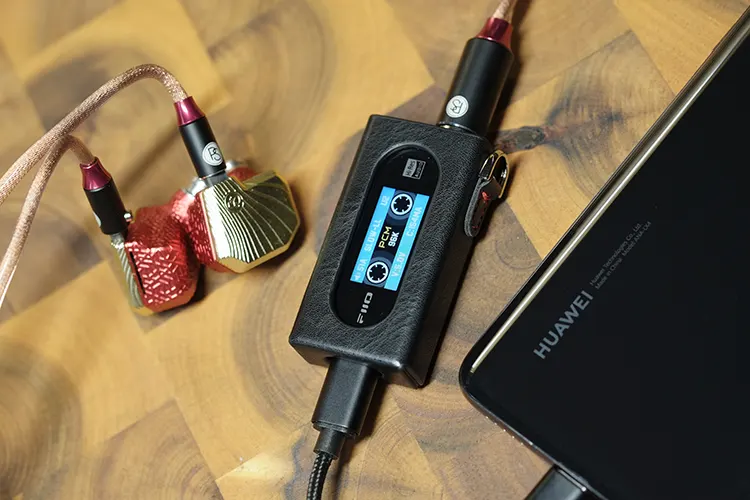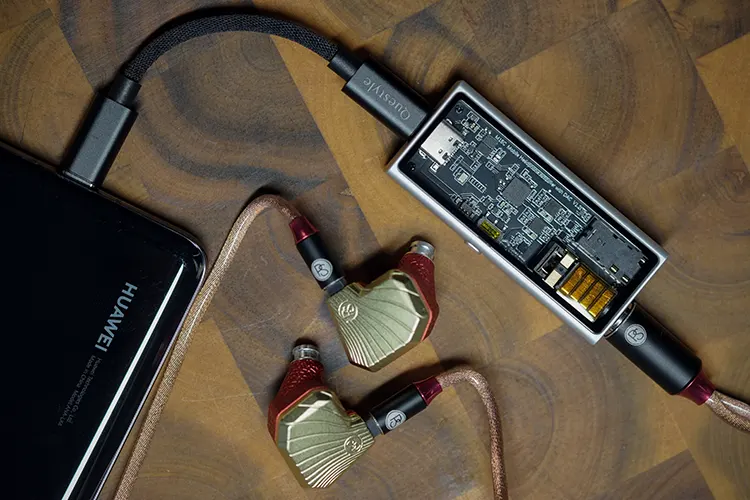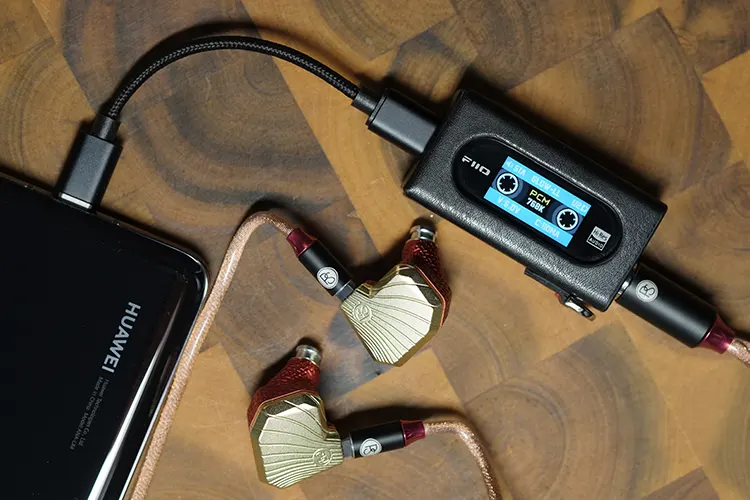Sound Impressions
Summary
Since I’ve not listened to PLUSSOUND’s previous IEMs, I didn’t know what to expect from the brand. Having released only six models since 2017, do they now have a house sound that users should expect?
The SONORA has a surprisingly well-balanced signature that places minor emphasis on the lows and highs, with a minor 3k bump that keeps the midrange in play at all times.
There is a lean towards a warmer sound, thankfully without the stuffiness that can accommodate such a decision.
Staging is open but not expansive with a strong technical performance to ensure a dynamic listening experience. There is plenty of texture available too.
The SONORA’s tuning fails to wow out of the box with big bass or shimmering treble, but over time shows just how versatile and competent it is.
This is the type of IEM that emphasizes why I like to take my time with a product before reviewing it because its strengths are not immediately apparent and evolve with familiarity, a quality shared by many of my favorites.
Bass
SONORA’s dual isobaric dynamics provide an experience that is balanced from upper to lower bass. There are no obvious spikes that bias it toward any specific region resulting in a very even, predictable response from track to track, genre to genre.
Depth is quite impressive with extremely deep notes providing a sensible amount of visceral feedback. Because the emphasis of this region is moderate, the SONORA won’t rattle your eardrums on bass-biased tracks, instead providing more of a tickle or shudder.
Texturing is excellent with grungy notes sounding appropriately detailed and dynamic. While falling short of the intense texturing provided by some competing products, I never found the SONORA lacking in detail preservation.
The speed of these dynamic drivers is also quite solid. They could easily keep up with the rapid double bass of aggressive metal tracks, and the intense basslines inherent to the drum and bass genre I frequent.
Every note remained distinct and audible with a complete absence of smearing or detail loss.
Mids
SONORA’s midrange is full and lush with a minor rise around 3k that helps ensure they stay prominent and in line with competing frequencies. The warmth they bring to the presentation is natural and sounds fantastic with male vocalists, giving them a depth and texture I rarely hear.
It’s unlikely you will use the SONORA for this purpose, but this presentation also sounds amazing with sports and event announcers, giving their voices prominence and bravado that is rare to hear. This carries over to audiobooks and other sources of media that are heavily vocal-biased.
While not the most detailed and crisp mid-range I’ve heard, the SONORA is quite competent and in no way lacking. The detail is there, it’s just not as in-your-face as other products using an armature configuration for these frequencies.
This presentation also helps with sibilance management, which is to say, it’s outstanding. On tracks where sibilance is prominent, the SONORA takes the edge off making them considerably more listenable than through other products that handle this quality with less aplomb.
As with the low end, the quality is there, it’s just not being shoved forward and made the priority. The balance they’ve tuned in is more subtle and mature than that.
Treble
With twin electrostatic drivers handling the high-end, it wouldn’t have been surprising if the SONORA had a bright, vibrant treble region that highlighted the use of this driver tech. However, in line with how they tuned the rest of the signature, this is not the case.
Both presence and brilliance regions are nearly evenly emphasized, with the brilliance region having a slight emphatic edge. This gives the SONORA lots of detail and excellent clarity with notes that are moderately weighted to avoid coming across as thin and wispy.
The presentation has just the right amount of shimmer and sparkle to provide an energetic output, but not so much as to fatigue your ears. It reminds me of what I/O Audio pulled off with their quad electrostatic driver setup in the VOLARE.
Given the use of electrostats, note attack and decay are truly rapid. Even on congested tracks, each note remains distinct and defined, free of the unintended slop or splash that can plague other driver configurations or lesser-tuned products.
Staging & Dynamics
I routinely read that earphones can’t provide a convincing soundstage, and I simply can’t agree. The SONORA is one of those products that shows off what an IEM can offer when handled properly.
The staging here is spacious and keeps up with the best I’ve heard from brands like Campfire Audio and oBravo with their Astrolith and Clio models respectively. The default vocal positioning starts just outside the ear and sets off a soundstage that is well-rounded in all directions.
Effects and sounds can flow far from the ear, maxing out around shoulder width. There is a welcome sense of height and depth as well, which adds to the immersive quality of the SONORA’s staging.
This is one of those rare products that has me pulling out an earpiece, occasionally thinking I heard someone trying to get my attention or one of my cats getting into trouble when I’m actually experiencing an aspect of the track I’m hearing in a way I wasn’t expecting.
SONORA’s technical aspects are strong too with nuanced channel-to-channel movement. It is especially competent off-center and at the staging edges where other products lose precision.
Tracks come across deeply layered through the SONORA giving its stage a strong sense of depth and dynamism that you typically only get with top-tier earphones. This carries over to its instrument separation which is also fantastic.
It is easy to single out and follow an instrument, even on messy or congested tracks that trip up other earphones.
The SONORAs electrostats don’t quite match the performance of the AMT found in oBravo’s Clio, but boy is it close while sounding considerably more natural in the process.
Synergy
Efficiency
The SONORA has a sensitivity of 110 dB @ 1 kHz and an impedance of 10Ω @ 1 kHz. It is quite efficient and easy to bring up to volume.
One aspect of the SONORA I appreciate is that it doesn’t take on the qualities of the source in play. If paired with a warm DAC or DAP, it retains its balanced signature, likewise with cooler, brighter sources.
The low impedance and somewhat high sensitivity result in background hiss when paired with some products, though the effect is minimal.
Pairing it with the Questyle M15C through its 4.4mm balanced port I heard a small amount of background hiss. Swapping to a single-ended 3.5mm cable from Earsonics, any hiss was absent entirely.
FiiO’s KA15 fared better with zero audible hiss through either 4.4mm or 3.5mm ports. Even after throwing it into high-gain, unwanted noise was absent.
Earstudio’s HUD100 provided the experience I expected from its two output options. Through the standard output port, the SONORA offered a black background while plugging into the high-output port for high-impedance gear resulted in an unpleasant pop and noticeable background hiss.
Shanling’s M1 Plus was a fantastic match for the SONORA with a dead silent background from either the 3.5mm single-ended port, or the 4.4mm balanced port, and on standard or high gain.
Given the SONORA is easy to drive, volume modulation can be problematic. The Questyle M15C is a notable example of this, being quite loud from both outputs or requiring a source with the ability to output unusually low volumes to compensate.
Pairings
Since this SONORA demo unit included a 4.4mm balanced out as standard, I paired it with the FiiO KA15, Questyle M15C, and Shanling M1 Plus, all of which utilize this balanced output option.
Out of the two DACs, FiiO’s offering was the better pairing. It provided a more organic, less digitally edgy sound that played better with the SONORA’s sensitivity resulting in a silent background through either port.
In the M15C’s favor, compared to the FiiO it provided a snappier, punchier low-end. This worked in its favor when listening to music with primarily electronic instrumentation since the less natural output wasn’t as apparent.
For DAPS, Shanling’s M1 Plus was stellar. It could easily drive the SONORA properly at very low and very high volumes. It never left the SONORA sounding anemic or unnatural, there was never any background hiss, and it allowed me to enjoy the music and the earphones without interruption.
The filters and tuning options in the M1 Plus and KA15 also gave them an edge over other sources since I could tailor the SONORA’s sound, though not as much as with other products. It’s not that receptive to EQ, which is fine given the versatility of the stock signature.




